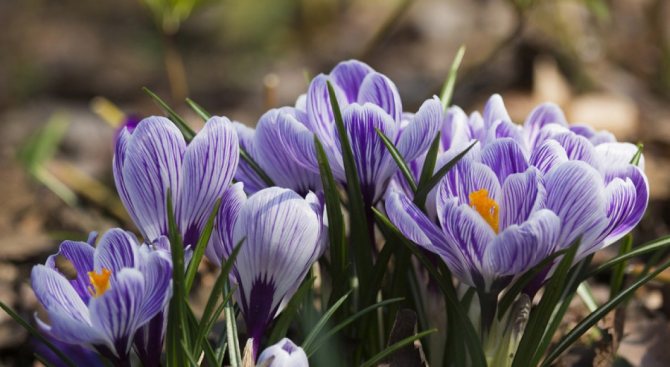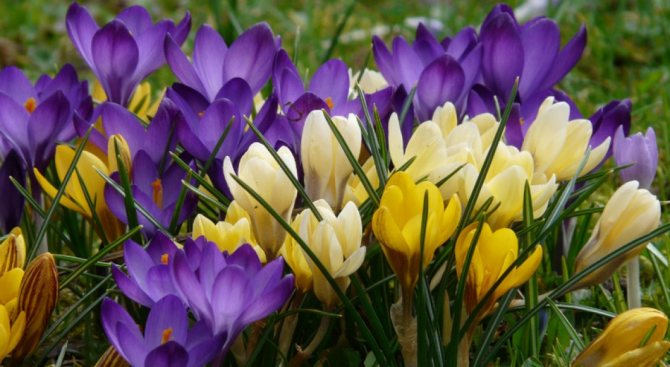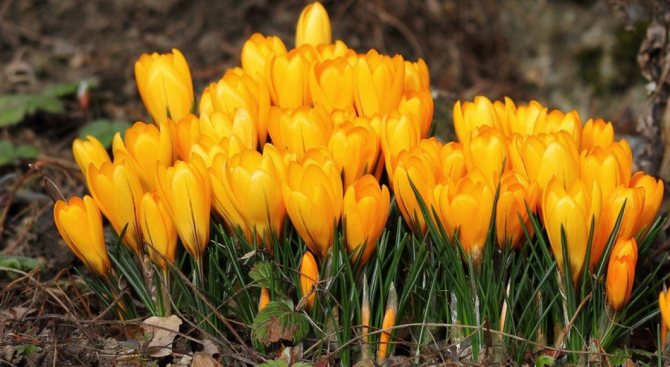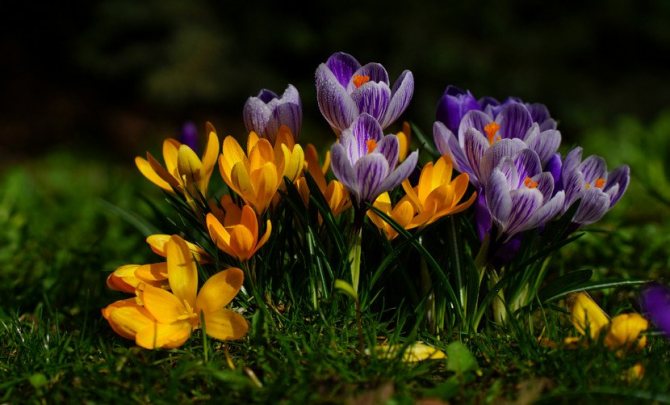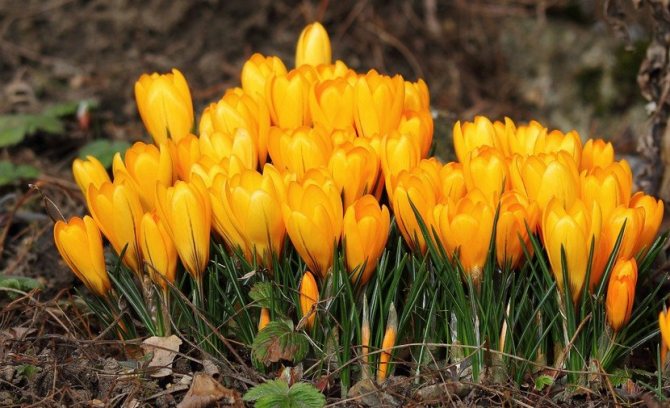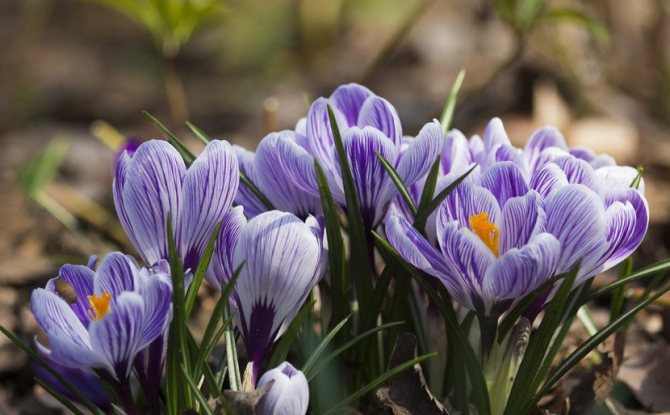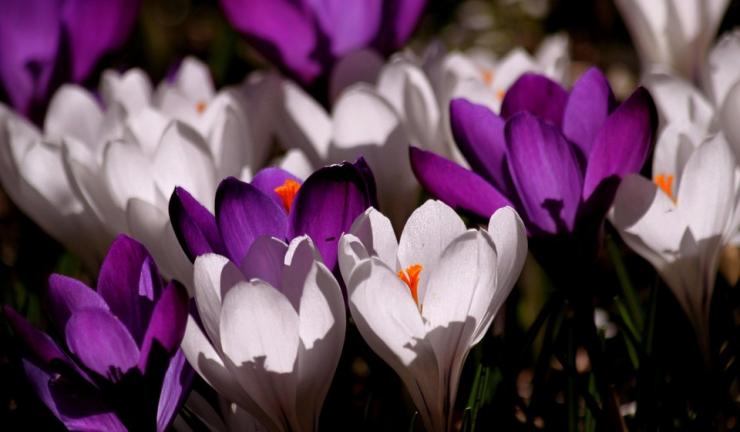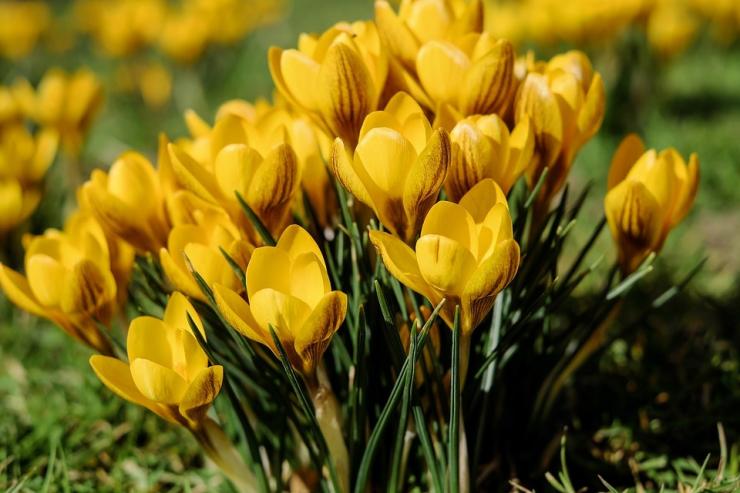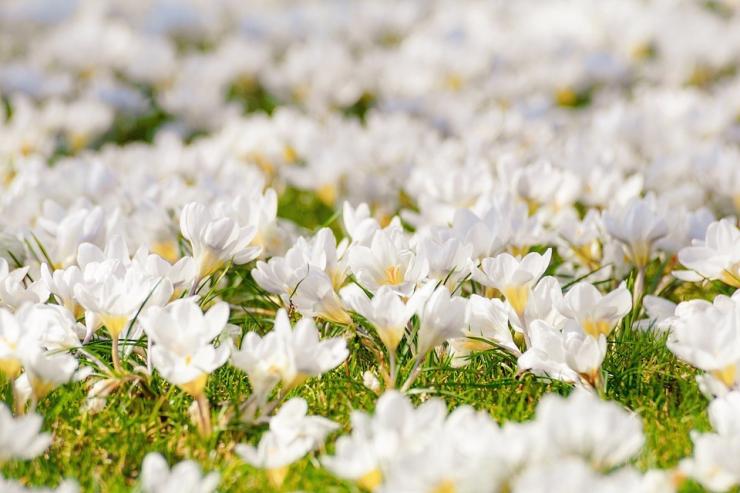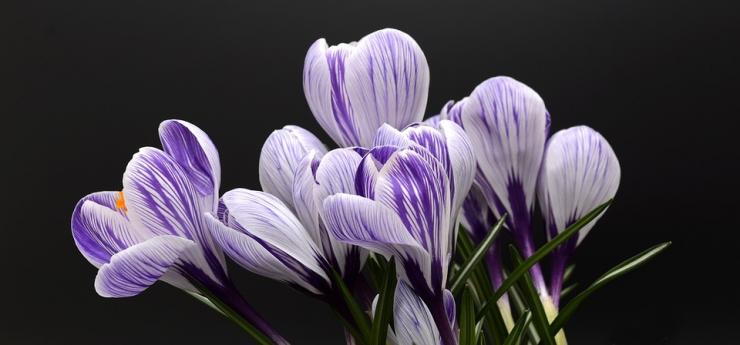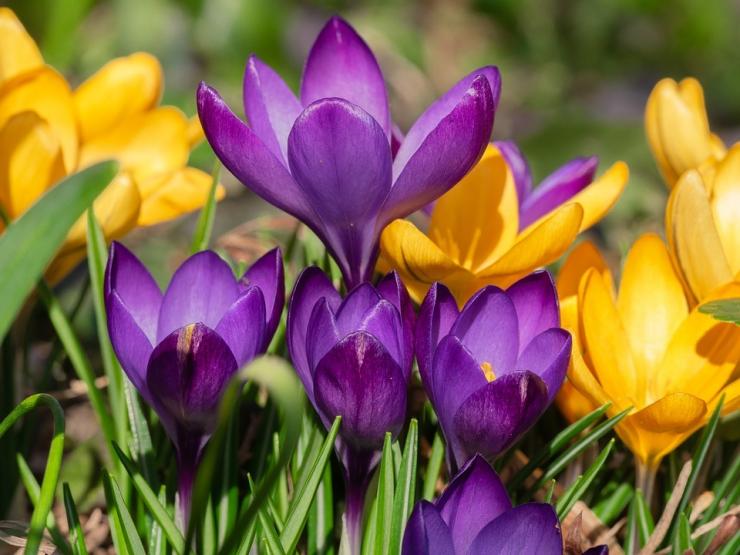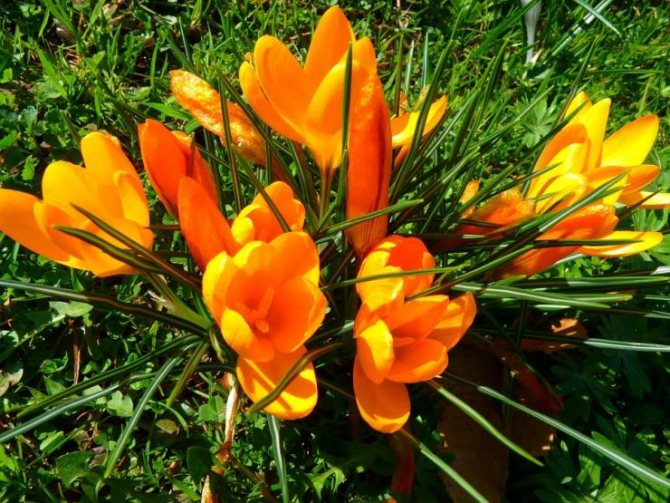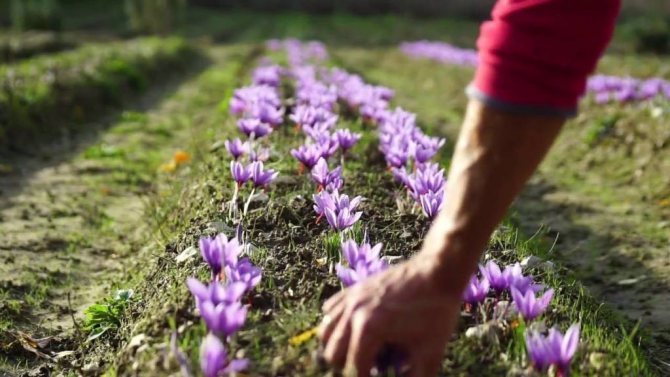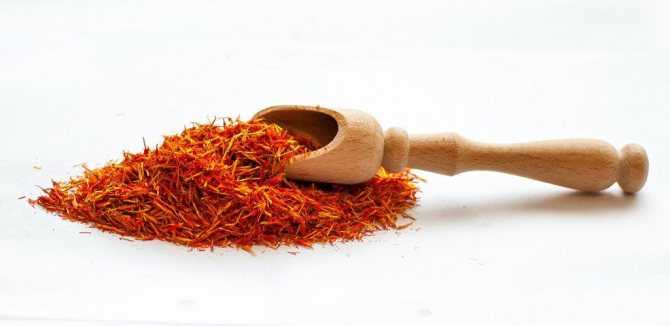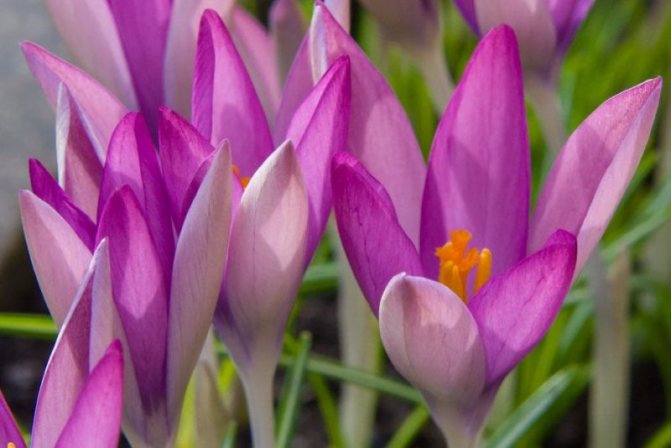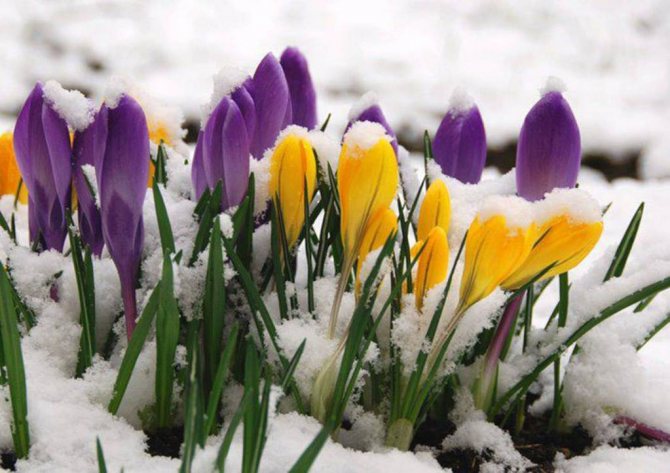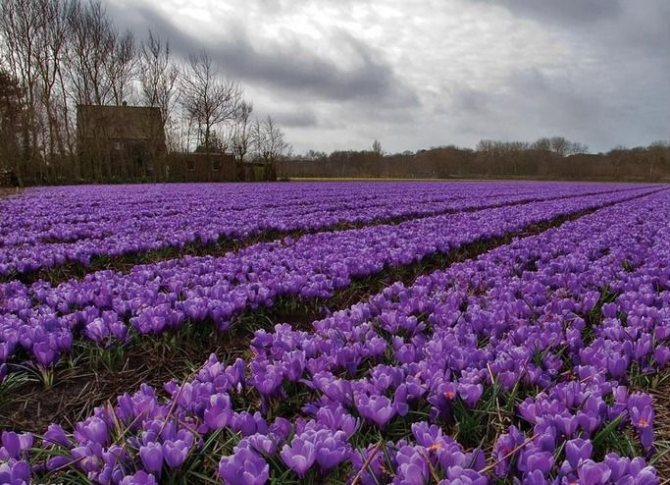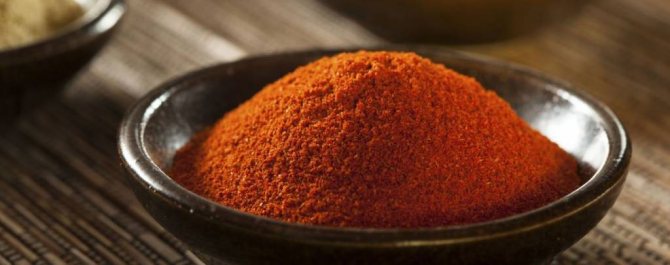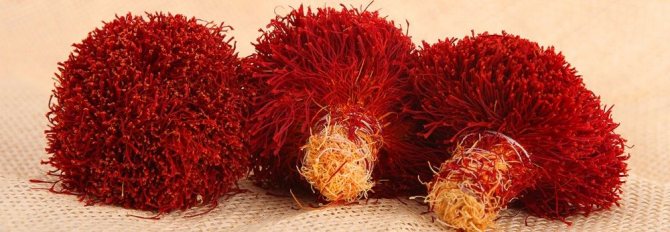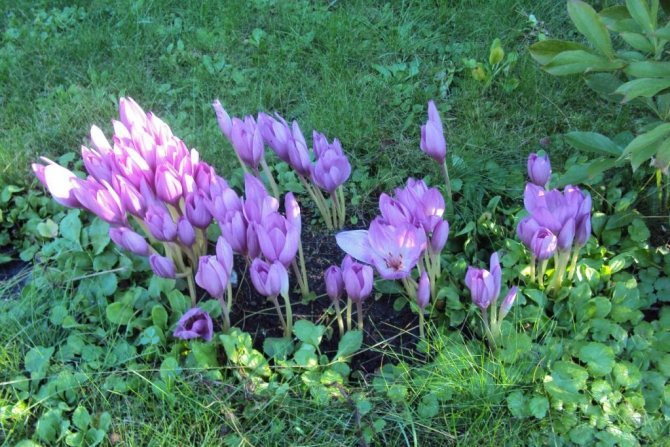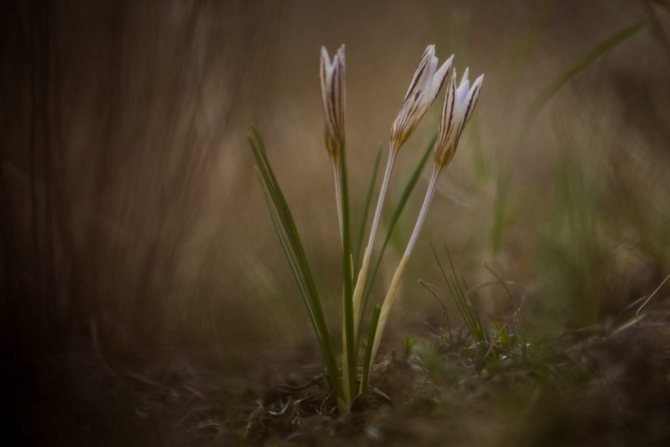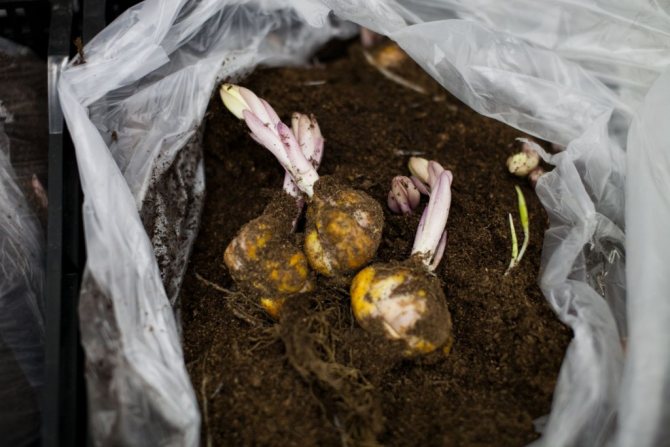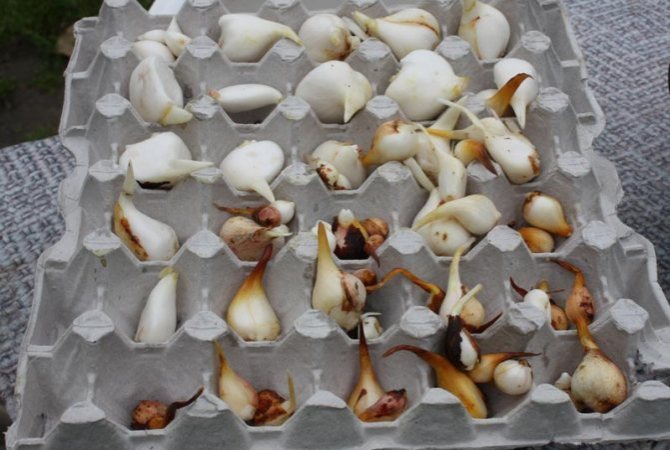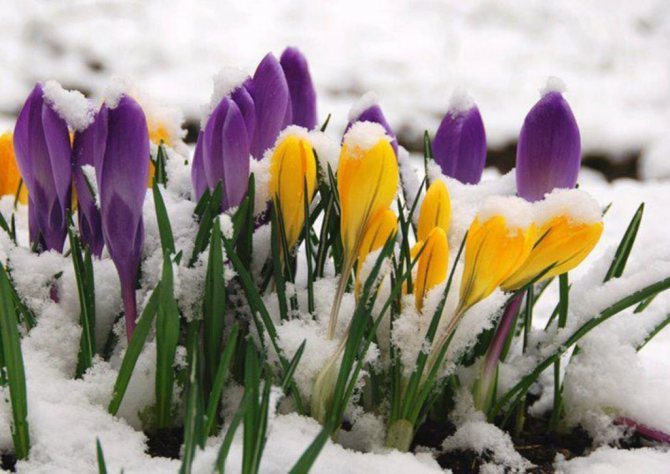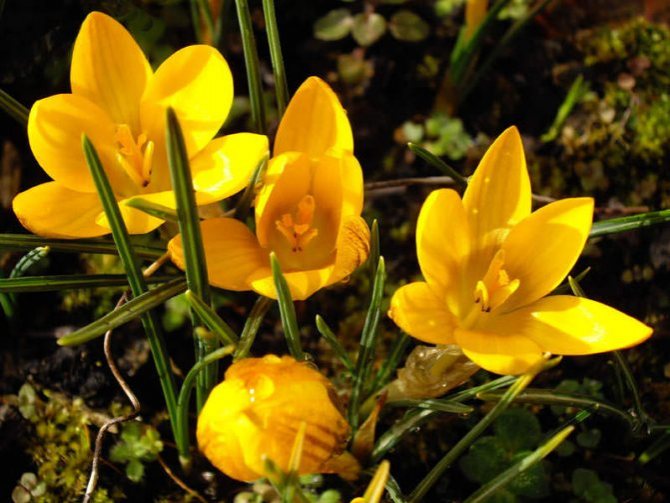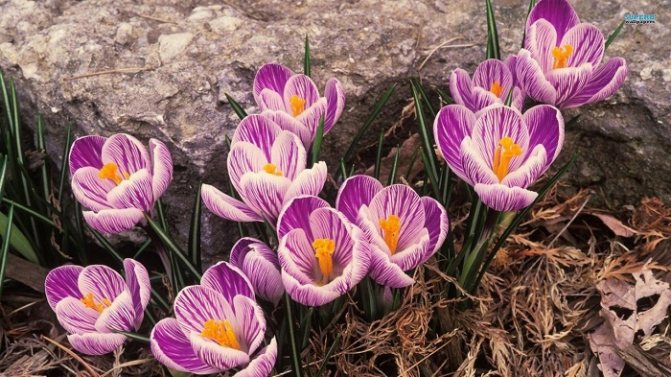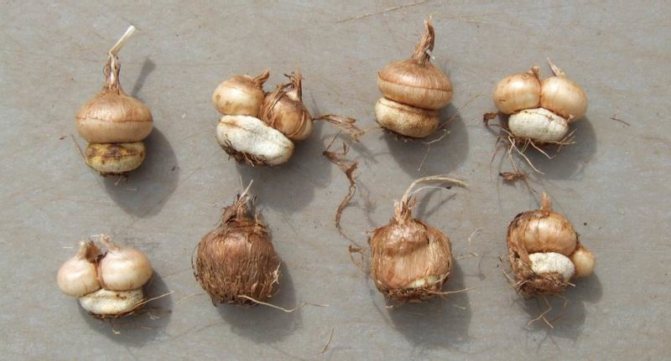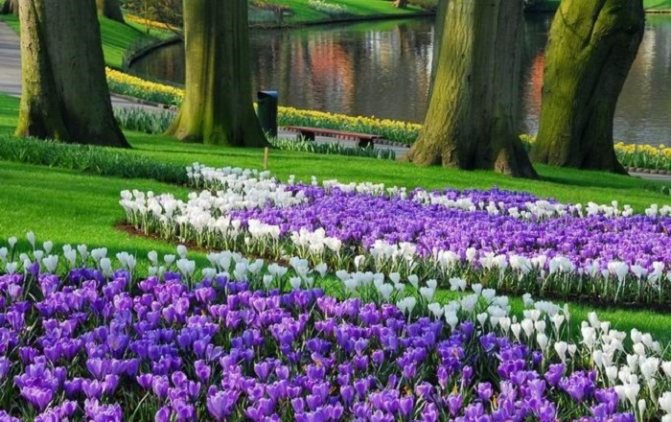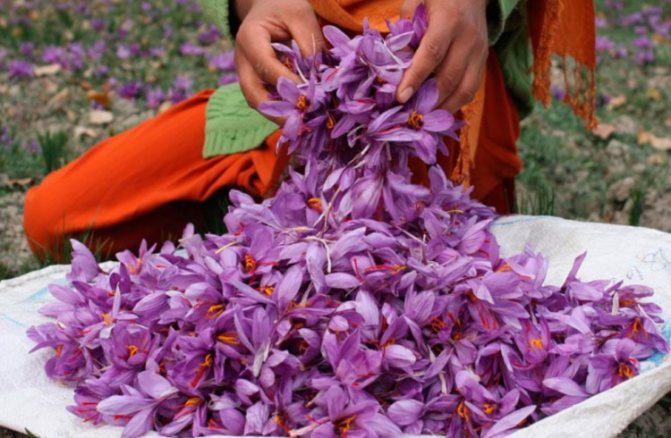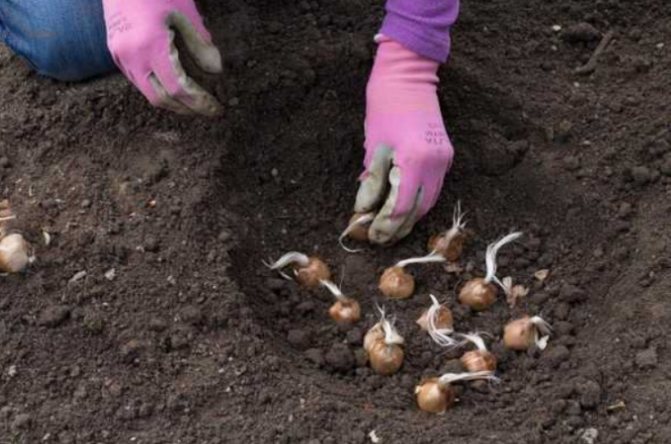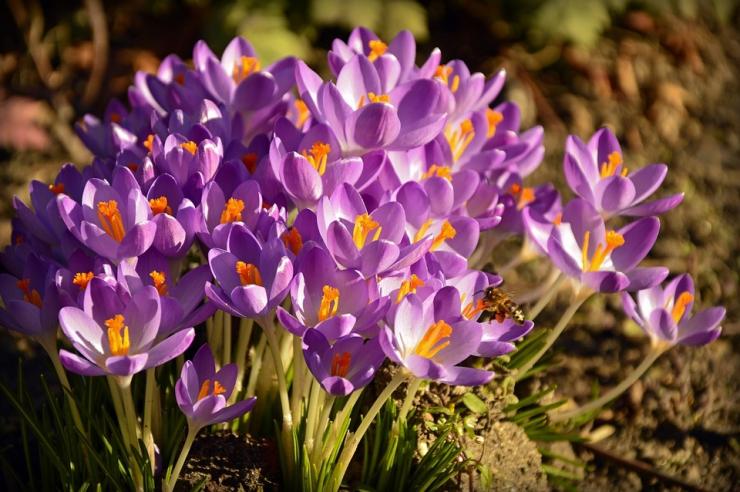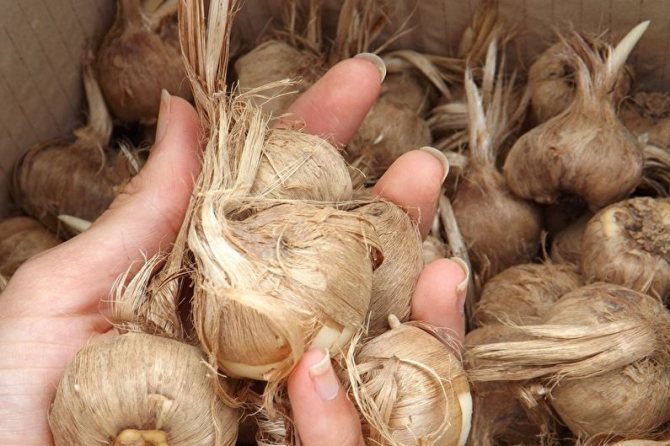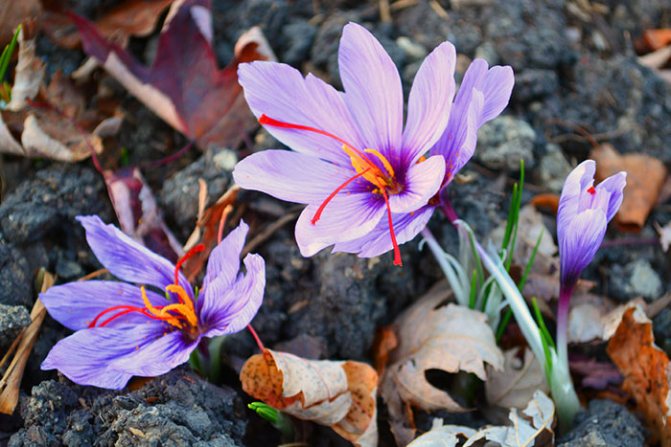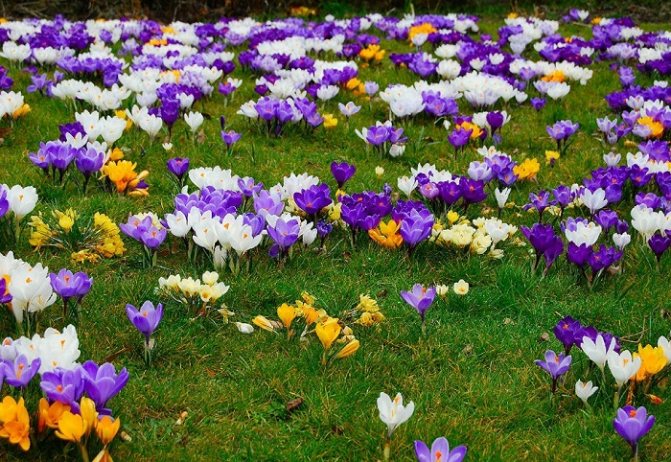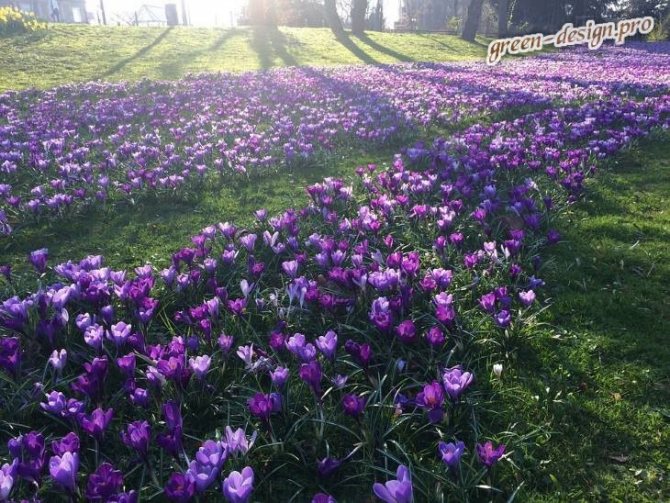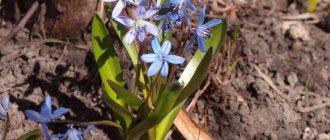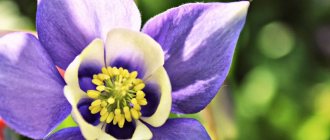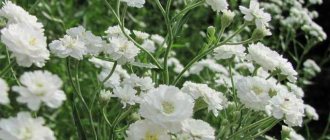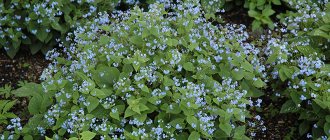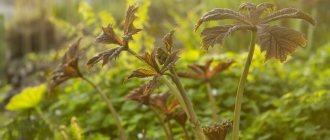Crocuses
Saffron (from Latin crocus) is a perennial bulbous plant that is a harbinger of spring. As soon as the snow has thawed, you can see it bloom. A spice known to many with an identical name is the pistils of the sown crocus, dried in a special way. Saffron has extremely useful properties due to its unique composition; it is used in many areas of human life.
Why saffron is the most expensive condiment
This spice is really very expensive! For example, Spanish saffron has a price of about 15-20 thousand dollars per kilogram. The cost of Kashmir saffron reaches 30 thousand dollars. Iranian saffron costs about $ 400-500 per kilogram. And this is almost the lowest price for this spice.
"Where do these prices come from?"
- you ask. The thing is that this spice is harvested almost by hand. Machine assembly techniques are not suitable due to the fragility of the collected material and the value of maintaining its integrity. And from one hectare, only ten kilograms of ready-made spice are obtained. It is difficult to disagree that this is a very costly and time-consuming production. The benefits and nutritional qualities of the seasoning are also added here. The spice is unique. This is where such a seemingly exorbitant price comes from.
Saffron: health benefits and harms
To understand how useful a spice is, it is worth considering its composition and nutritional value.
The stigma of the crocus plant contains a huge amount of nutrients. This is why saffron is prized.
The seasoning includes:
- vitamins of group B, C, A, PP;
- zinc, calcium, magnesium, sodium, fluorine, potassium and other minerals;
- essential oils.
100 grams of the product contains: proteins —11.44 grams; fat - 5.6 grams; carbohydrates - 61.2 grams. Energy value - 310 kcal per 100 grams.
The benefits of saffron
It is believed that the regular use of this spice contributes to:
- improving the functioning of the digestive tract;
- cleansing the body of toxins;
- relaxation of the nervous system;
- strengthening the skin and increasing tissue elasticity;
- strengthening of musculoskeletal structures in the body;
- stabilization of the hematopoietic system;
- blocking the development of pathogenic flora in the body;
- the formation and strengthening of the immune system.
With the use of this spice, a huge number of folk remedies are made for the treatment and prevention of various diseases.
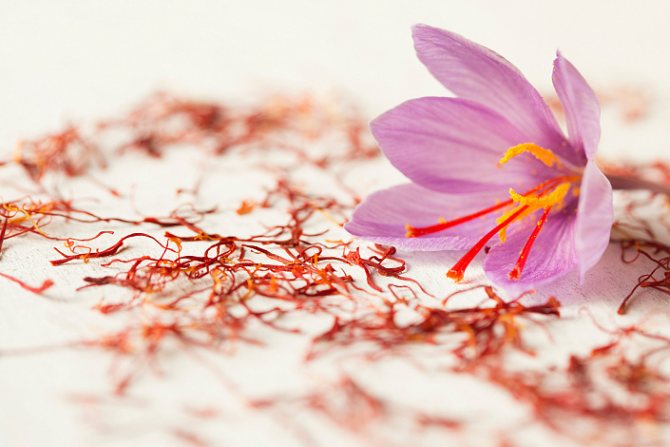
For example, saffron in combination with milk (herbal tea) and honey is used to dissolve kidney and gallstones. Various decoctions and infusions of saffron are used to cleanse and rejuvenate the body. Saffron-based products are used to treat diseases of the throat and upper respiratory tract. The seasoning actively prevents the development of viral, bacterial, fungal infections. In traditional medicine, there are a huge number of saffron-based recipes that are aimed at treating joints and muscle tissue. Saffron is part of a variety of soothing medications. This seasoning relaxes the nervous system and promotes healthy sleep.
With the help of saffron, you can relieve pain, relieve spasms. Therefore, this spice is included in the formulation of painkillers, antispasmodics. Saffron has an anti-inflammatory effect and stabilizes metabolism.Therefore, the spice is good for maintaining the health of the digestive system. Often, saffron is part of the endocrine collection. This seasoning is used as a natural aphrodisiac to restore and maintain sexual function in men and women. Saffron is sometimes used to treat asthma and other allergic conditions.
However, for whatever medical purpose saffron is used, you should not prescribe it yourself and use it without a doctor's supervision. After all, any chronic diseases, as well as acute pathological conditions, can become a serious contraindication for the use of this spice.
Saffron harm
Like any spice, saffron can be beneficial to the body, and in some cases, even harmful. After all, there are a number of contraindications for almost every product.
So, it is not recommended to use saffron in the following cases:
- pregnancy and the period of breastfeeding;
- children under 3 years old;
- diabetes mellitus type I, II (with caution);
- high blood pressure and hypertension in the acute stage;
- peptic ulcer of the intestine, stomach, duodenum.
In large quantities, saffron has an exciting effect on the nervous system. You should not go beyond the recommended norms (it is permissible to consume up to 1 gram of saffron per year, it is permissible to use no more than 5 strands of seasoning for 1 dish), even if you really like this seasoning and is available in unlimited quantities.
It is also not recommended to use this spice in case you suffer from food allergies. Saffron should be used with caution by persons suffering from nervous, mental disorders and prone to negative reactions from the nervous system.
If you have any doubts related to the characteristics of the body or based on the current state of health, you should consult a specialist about the permissibility of eating saffron.
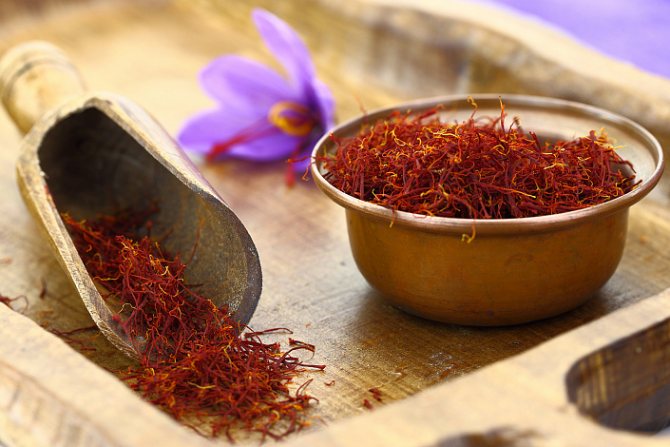

Types of crocuses grown
In botany, there is a typology that divides all varieties and types of saffron into 15 groups. One consists of autumn flowering species, and the remaining 14 are spring flowering species. Market varieties that have received great fame are allocated to the group of Dutch hybrids. The second most popular is the Chrysanthus group, formed by mixing golden and two-flowered saffron with its hybrids.
Did you know? Saffron
—
natural preservative. If you season a dish with it, it will keep well without a refrigerator.
Spring crocus can grow up to 17 cm, flowers are purple or white, there are 1-2 pieces per corm. Flowering occurs within 17–20 days.
The two-flowered species is found in many countries, differs in its natural shape - the petals are simply white or with brown-violet lines, lilac with brown spots, etc.
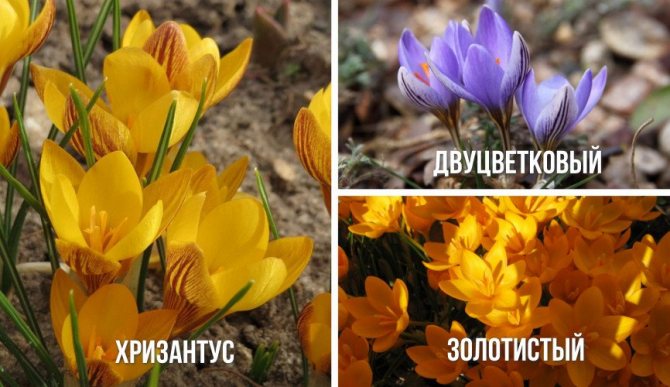

Golden saffron grows in rocky areas, its flowers are golden yellow, anthers are orange. Flowering time falls in April and lasts for 3 weeks.
Did you know? Eating saffron can be fatal. The annual rate for an adult is 1 gram.
This species is subdivided into varieties:
- Blue Bonnet;
- Nannet;
- I. Gee. Bowels.
The Thomasini species naturally occurs in deciduous forests and hillsides. During flowering, the plant resembles a star with a white hole. The leaves are pink-lilac in color and the tube is white. One bulb grows up to 3 flowers 6 cm high. Three-week flowering occurs in April. The most popular varieties are Laylek Beauty and Whitesell Purple.
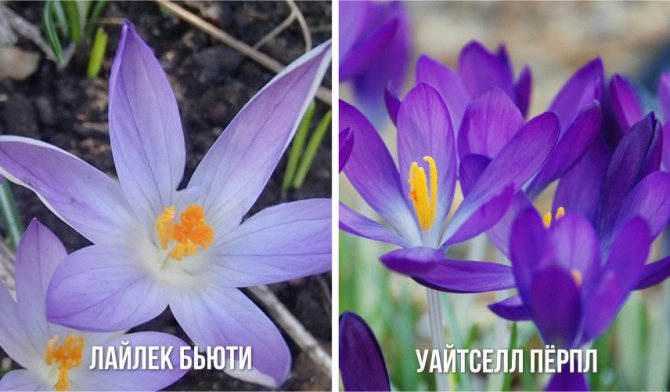

Next, we will consider the species, the flowering of which falls in the fall. The beautiful crocus is found in mountainous or forest areas, often in countries with a humid climate. Leaves can reach a length of 30 cm, purple flowers with purple veins, up to 7 cm in diameter.Blooms in September. The most popular varieties: Albus, Artabir, Oksinan.
The cute crocus is characterized by light lilac petals with dark lines, the height varies between 7 and 10 cm. 5-10 flowers can open on one plant. Flowering occurs in mid-September - October, the plant is resistant to light frosts.
Diseases and pests
The cultivated varieties and hybrids of crocuses are resistant to diseases, but in moist soils they are exposed to various viruses and fungal diseases. Diseases can be fought only, unfortunately, by the destruction of the affected bulbs, while the earth is spilled with a special solution. After finding diseased bulbs, the flowers must be grown in another place.
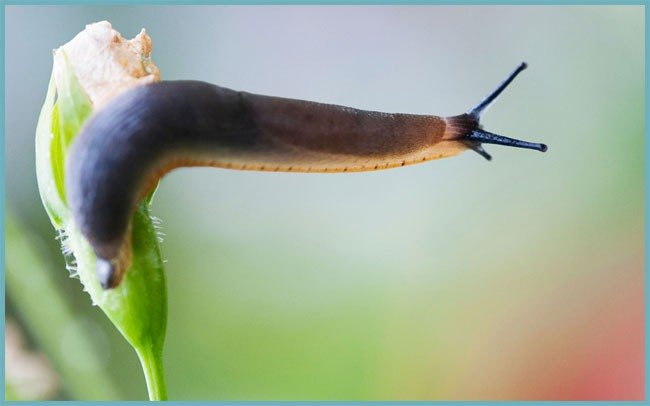

Slug
Crocuses suffer from invasions of moles and mice, but if flowers are planted on alpine slides and rockeries, then rodent protection is pre-installed there. Crocuses are also susceptible to attacks by slugs and scoop butterflies; to get rid of insects, they are regularly sprayed with insecticides.
Attention! With improper care, crocus flowers become smaller, lose their color intensity or do not bloom at all.
Planting difference in autumn and spring
The main difference in this procedure is the variety you took - they are divided into autumn flowering and spring flowering. The first ones are planted from the end of May to the first half of July - the climatic conditions of your region affect the accuracy. If you expect to see bloom in the spring, planting plants should be done in the fall. This option is considered the most popular among gardeners, it will be discussed in more detail.
Did you know? For the first time, European gardens were replenished with exotic crocuses at that time in the 16th century - these were Dutch hybrids.
Corm care
When the flowering of crocuses is over and the leaves are dry, and this will happen by the middle of summer, it is time to take care of the corms. If transplanting them to another place is not planned, then the tubers can be left in the ground. You just need to remove dried leaves and flowers. As a rule, the corms left in the ground tolerate light frosts well, but if the winter is rather cold, then it is better to insulate the flowerbed with leaves or branches.
Growing gladiolus black and other flower varieties
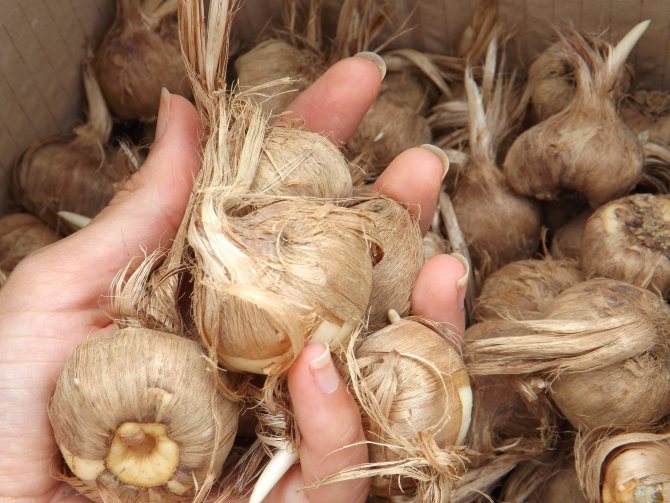

If there is a desire to transplant the plant to some other place in the garden, then in the middle of summer the corms should be dug out of the ground. Select the healthy and those that are larger, and get rid of the damaged and sick. Bulbs should be stored in well-ventilated areas. The optimum storage temperature is 18-22 degrees.
Planting and care in the open field
If you decide to start growing crocuses in the open field, when planting, you should focus on the following indicators: the choice of the optimal place on the site, the appropriate soil, the availability of sunlight, the frequency of watering, as well as the traditional processing of saffron bulbs.
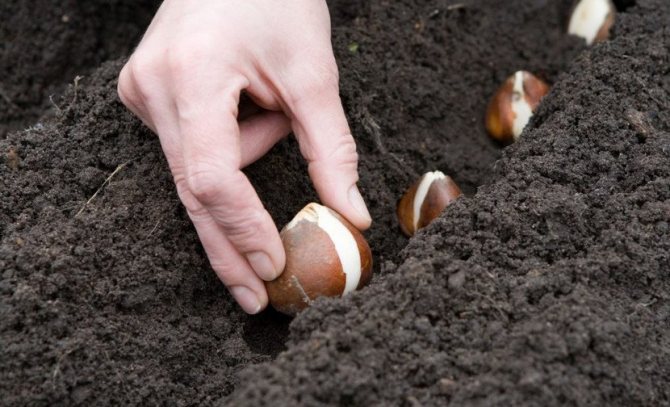

Bulb processing
Before planting, experienced owners recommend disinfecting the plants in a fungicide (Fundazol, Maxim, Skor, Vitaros or simple manganese acid are suitable) or use growth stimulants (for example, Epin). Almost all solutions assume such a consumption of the drug - 2 ml per 1 liter of water, but first, be sure to read the instructions.
When the solution is prepared, dip the planting material into it and leave for 30 minutes. After the expiration of the time, immediately start planting, you do not need to wash out the preparations.
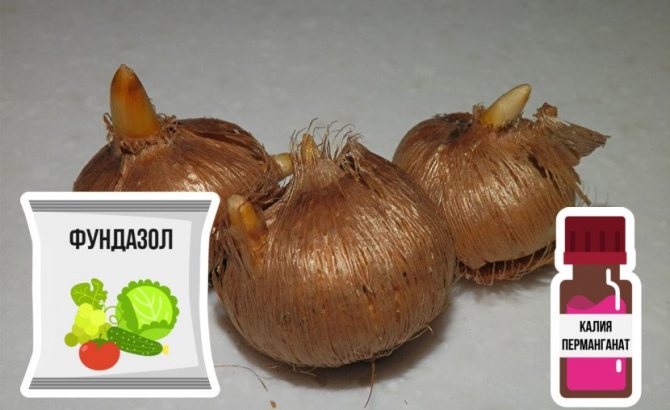

If there is no fungicide, use a mild solution of potassium permanganate - for this, potassium permanganate must be added to 1 liter of water at the tip of a knife. It takes half an hour to process the bulbs in the resulting liquid.
Also learn how to transplant crocuses correctly.
Landing dates
The landing time is in direct proportion to the territory of residence and the characteristics of the climate. Saffron takes very little time to adjust - about 2.5–3 weeks before the onset of cold weather. The flower itself is not too whimsical, but the earth should be moist.
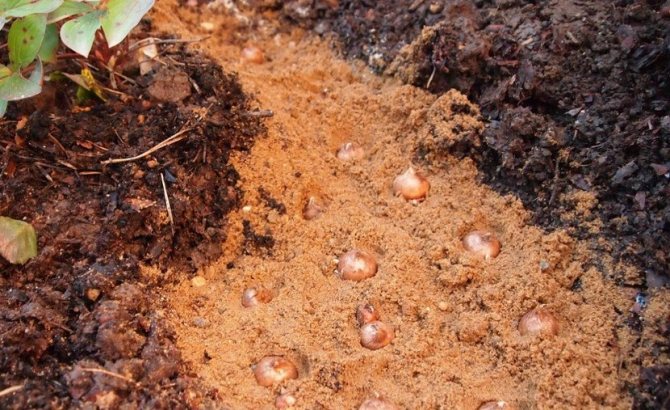

Focus on the state of the weather - crocuses are planted when the daytime temperature does not exceed + 6 ... + 8 ° C, and light frosts can be observed at night. In central Russia, for example, in the Moscow region, this weather is set in December, sometimes in November. In colder regions such as Siberia and the Urals, it is not necessary to land until September.
Soil preparation and loosening
The most acceptable for saffron are light loams or sandy loam, but it is advisable to add sand to heavy soil, otherwise there are risks that the plant will not take root. On the site, you should choose a predominantly sunny place so that the flowers are large and bright. If you live in an area that is flooded with rain and melt water tends to stagnate, you need to raise it before planting.
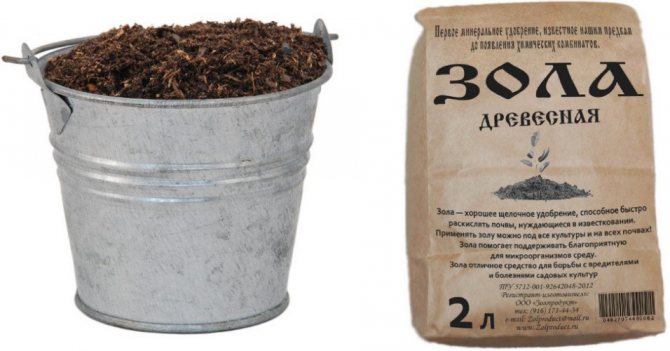

Closer to autumn, cultivation is carried out at the chosen place with the addition of a standard dose of fertilizers: a bucket of humus or compost, a handful of ash per 1 m². For soil with a high acidity content, it is allowed to increase the amount of ash or slaked lime to several handfuls - the crocus likes a neutral or slightly acidic environment.
When the first stems appeared from the ground, it becomes necessary to carry out another mandatory procedure - loosening. To do this, take a short rake with a narrow base and a small number of fine teeth. It is worth acting carefully so as not to damage the leaves and stems.
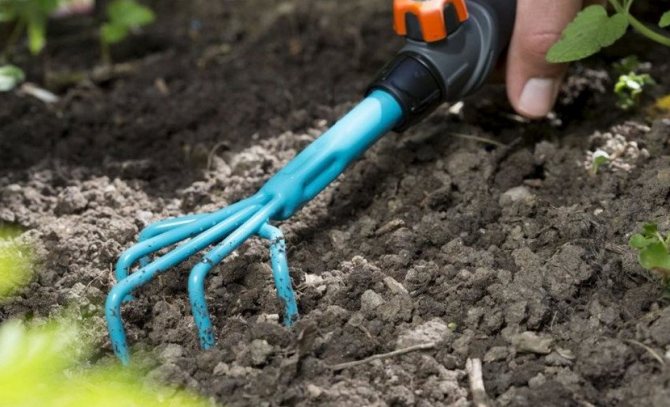

Planting rules
If you decide to try growing crocuses in your country house, take note of the following tips:
- a crocus is buried in the dug hole so that on top of it there is a layer of soil two to three times larger;
- the distance between the bulbs must be at least 10 cm;
- when planting plants in rows, it is also worth controlling the distance - at least 25 cm between them. If there is less space, then the flowers may not have enough space for full development;
- you need to water, but not overdoing it, since rotting bacteria and fungi form in a humid environment.


Watering and feeding
If the area with planted saffron in winter was covered with a dense layer of snow, then watering is not required, since excess moisture can negatively affect growth. If the winter is snowless, then the soil will need to be moistened once every 2-3 months.
Important! To form the correct corms, it is necessary to fertilize after the first shoots appear, during flowering and after wilting.
Top dressing is applied during planting, directly into the dug holes. Saffron assumes phosphorus and potash fertilizers or compost as an organic supplement, but the use of nitrogen-containing fertilizers can be harmful. If you do not dig up plants every year for the winter, then in the spring you will need to prepare a dose of top dressing delivered through watering - minerals must be added to the water in advance.
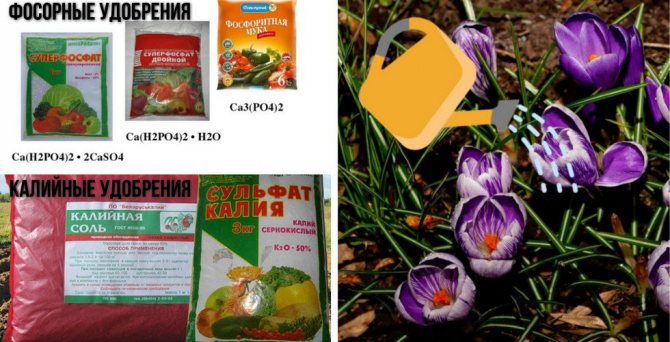

Disease prevention
If all the subtleties of agricultural technology were taken into account, then the plant will practically not hurt. However, if you do not follow them, crocus can pick up viral diseases.
Their signs are:
- deformation and cracking of the petals;
- stopping the growth of the seedling;
- yellowing of the leaves.
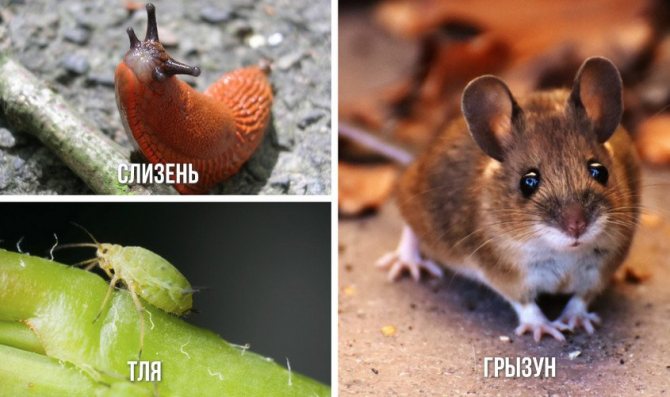

Their appearance can be prevented by treatment with fungicidal solutions. These flowers are often attacked by slugs, nightlights, aphids and rodents - the only way out in this situation is to plant them near cultivated plants.
Sometimes you can see a flattened crocus with small gray spots on the surface of the petals - this indicates a viral disease transmitted by thrips, mice and aphids.You cannot spend time with diseased plants - you must immediately remove them from the front garden and burn them so that the infection does not have time to spread to the rest of the specimens. The place where the infected crocuses were located is watered with a strong solution of hot potassium manganese.
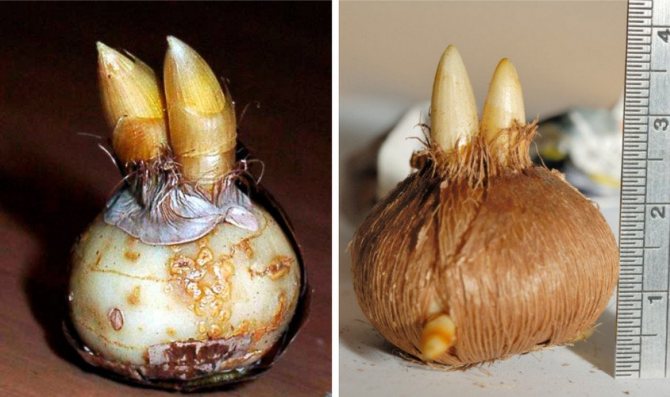

As a preventive measure, you need to carefully inspect the purchased plants. If the bulbs become wounded while removing them from the ground, sprinkle them with tree resin and then dry them at room temperature.
Digging and storage rules
Crocuses have already stopped blooming, their leaves have begun to turn yellow and dry - these are signs of the right time to dig up. After digging, the bulbs should be allowed to dry in the shade and then hidden in a box until August.
The ideal storage temperature is + 22 ° C, over time it gradually decreases to + 15 ... + 20 ° C. At home, it is difficult to observe the exact temperature regime, so experienced gardeners remove the box in a dry, dark and, importantly, well-ventilated place.
Video: What to do with crocuses after flowering
Planting a plant
Spring crocuses are planted in early autumn (late August - early September) at a distance of 7 to 10 cm from each other. Crocuses planted in September are not hardy enough, so they are covered for the winter in order to avoid freezing of the bulbs, which is quite dangerous on clay soils and loams. Dry foliage, peat and humus are useful for insulation.
In the planting area, recesses are prepared so that the bulb can fit freely. When planting tubers, the soil must be well fertilized with compost. A drainage is placed at the landing site, in order to avoid the accumulation of stagnant water and rotting of the bulbs. Expanded clay, screenings, coarse sand are used as drainage. Then the top is filled with a fertile layer, mixed with compost.
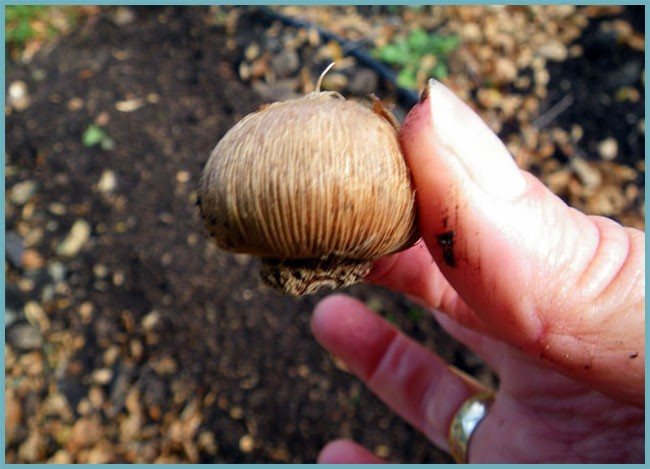

Crocus bulb
If the soil is fertile and well fertilized with compost, then in the first year after planting, no fertilizer is added, the next year potash and phosphorus additives are added to the soil. After planting, the rhizomes are covered by mulching the soil.
Crocus reproduction
Saffron can be propagated by seeds or using corms. The first method is used extremely rarely, mainly in order to grow a rare variety. In this case, it is necessary to purchase seeds in large volumes. The planting material is perfectly preserved, but for species that bloom in the fall, it is better to use exclusively the blank for overwintering.
Important! To minimize
contactcrocus corms with weeds, it is better to immediately plant them in a pot.
While waiting for the first shoots to appear, the containers with seeds are covered with agrofibre or light-protective film. Flowering will follow after 3-4 years. The breeding process does not require digging up the corms every winter - it is enough to perform this action once every 3 years in the summer to separate the bulb from the grown children.
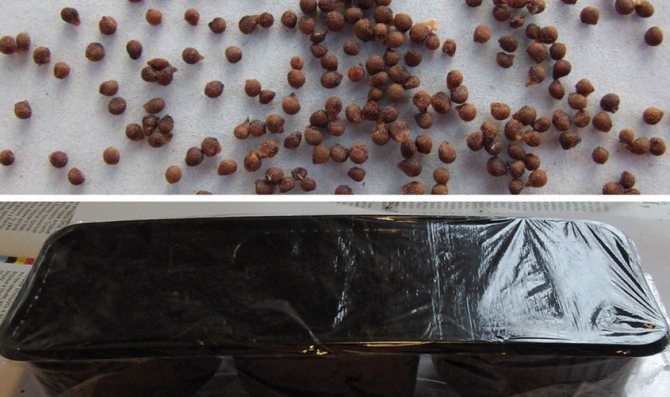

It is recommended to disturb autumn-flowering saffron in June-August, and spring-flowering saffron in July-September. The seedling is removed, cleaned of defects and dry scales.
7.Appointment
It can be used for forcing, but it will take some effort to maintain the temperature and light conditions.
Different varieties of crocuses bloom at different times and by placing several different bulbs in one pot you can enjoy flowering longer.
Crocus or saffron stigma - valuable seasoningwhich is sometimes used in cooking. Saffron has also been used to dye fabrics and foods.
↑ Up,
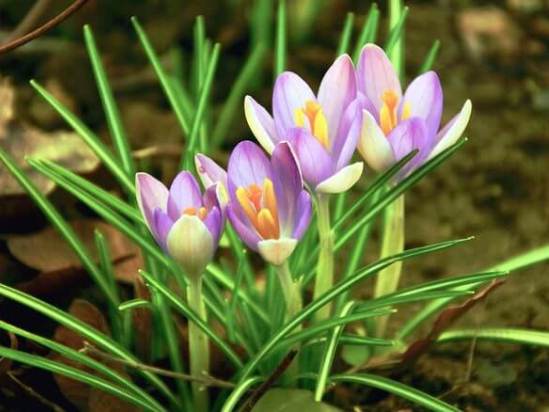

The seasoning can be checked for naturalness by staining. When a few stigmas are added to a few liters of water, it takes on a uniform yellow or orange color. An artificially created seasoning has no such effect.
Interestingly, crocus bulbs are also considered edible - their eat after heat treatment.
Flowers look very beneficial in group plantings and when growing on the alpine slides.
Crocuses are one of the very first plants to decorate a garden plot in spring with their flowering.
↑ Up,
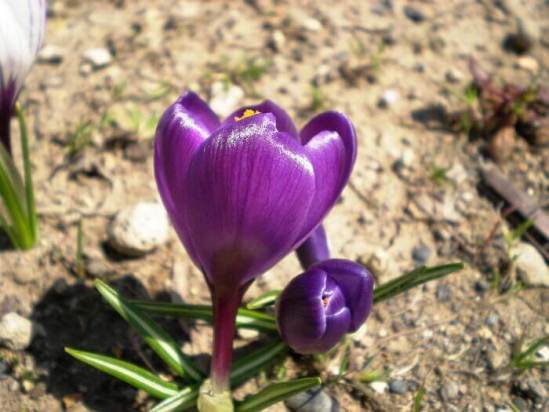

↑ Up,
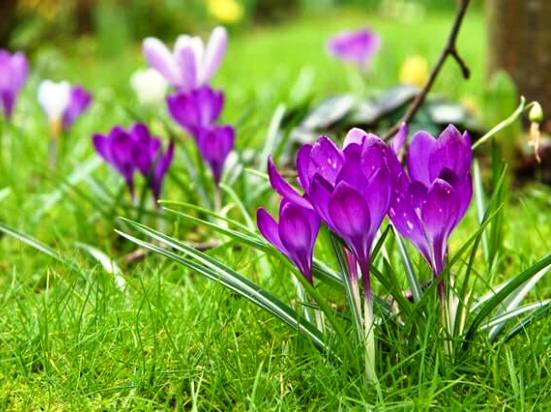

Crocus growing as a business
The cost of the spice obtained from the described flowers breaks all records: 1 g can cost about $ 10. For one kilogram, connoisseurs are ready to pay up to $ 1000, and if it is of Iranian origin, then about $ 2000. For this reason, many people want to master the drying technique on their own and start their own profitable business.
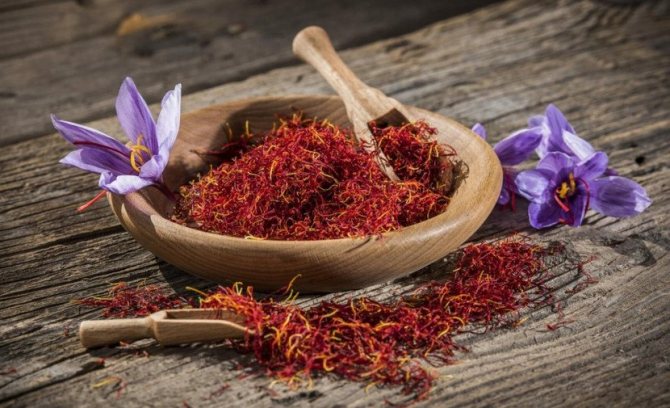

After completing the above steps, the flowers are harvested during their flowering period, the pistils are manually separated, and then dried. As with any action, there are advantages and disadvantages.
- The positive aspects include:
- quick payback;
- ease of sale (market, spice shops, etc.);
- the ability to grow other spices nearby.
- The disadvantages include:
- hard work;
- the need to immediately invest a large amount of money;
- hiring workers who will have to pay wages.
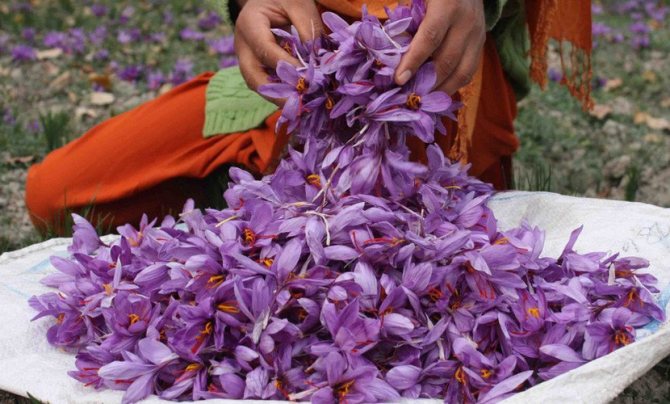

Saffron is a versatile plant. These flowers can be used to decorate an alpine garden, curb, lawn or flower bed, and a wide range of shades will help create a bright composition that pleases the eye. It's not difficult at all, the main thing is to adhere to the above instructions and recommendations.
How to grow saffron from seeds
Crocuses can also be grown from seeds. But this method of reproduction is used quite rarely, for the reason that crocuses grown in this way will begin to bloom only 4-5 years after planting in open soil.
To grow crocuses from seeds you need to do the following:
- Seeds are sown in late autumn or spring (late March). In both cases, the seeds must be soaked in advance for 30-40 minutes in a growth stimulator. After that, place in a weak solution of potassium permanganate (potassium permanganate).
- Seeds should be stratified before sowing.
- Take a shallow container, pour wet sand into it and sow seeds. They should not be buried in the ground, but simply distributed on the surface. Close the container with the sown seeds with foil and refrigerate, where vegetables are usually stored. Keep there for 2-3 weeks. You can also dig in the flowerbed and cover with spunbond.
- After this time, take the container out of the refrigerator and put it in a warm place that is well lit.
- When shoots appear, they need to be watered. For irrigation, a fine spray is used.
- After the plants grow up, they can be planted in different pots or in a flower bed.
Growing conditions
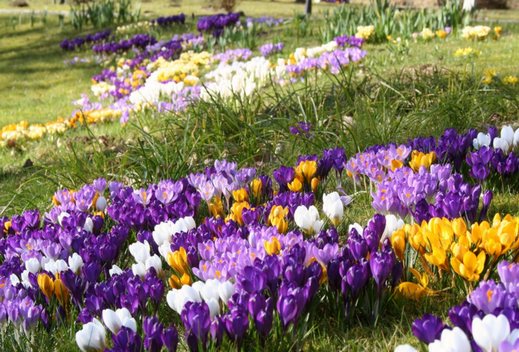

Let's find out what place to choose for a flower bed for crocuses, what conditions are necessary for a flower.
Location and lighting
Find a place that is open, well-heated, and well-lit by the sun. If you plant under trees, then only under the condition of a thin, not dense shade. It is not recommended to break a flower bed with crocuses under conifers and in the shade of buildings.
Temperature and humidity
Crocuses are unpretentious plants, capable of developing and blooming even in not completely warmed-up soil. However, in order for them to please with beauty and brightness regularly and for the prescribed two weeks, the bed should be perfectly warmed up by the sun's rays.
The moisture level is important for plants. The flower bed should be located on a slight elevation, since the plant categorically does not accept flooding and waterlogging of the soil. If the site is low-lying, drainage will be needed.
Priming
Crocuses have no special requirements for the composition and structure of the soil. These primroses are quite capable of germinating in a poor, dense substrate: but subject to sufficient feeding. Ideally, of course, it is better to plant crocuses in nutritious and light soil. Loam is optimal.
The acidity of the substrate is important: this indicator should be neutral. If the soil on the site is acidic, before planting the flower bed. We recommend to loosen overly packed, dense soil by adding sand, fine gravel. Compost will also be useful in this case.
Transfer
Crocuses are transplanted after they become cramped in one area. This can be seen by the size of the inflorescences, which will become much smaller. This usually happens after 4-5 years of growing in one place. Plants are transplanted in two ways:
- the bulbs are dug up and stored in the house until planting;
- the bulbs are replanted immediately after being removed from the soil.
Decorative bow - planting and care in the open field
Which method to choose and when to plant crocus bulbs depends on the capabilities and free time of the grower.
Note! Home storage should be at about 15 ºC in a dark place in a perforated cardboard box for ventilation. Each onion is additionally wrapped in a piece of paper.
The timing of the transplant is the same as for planting: autumn plants are planted from July to August, spring ones - in September-October.
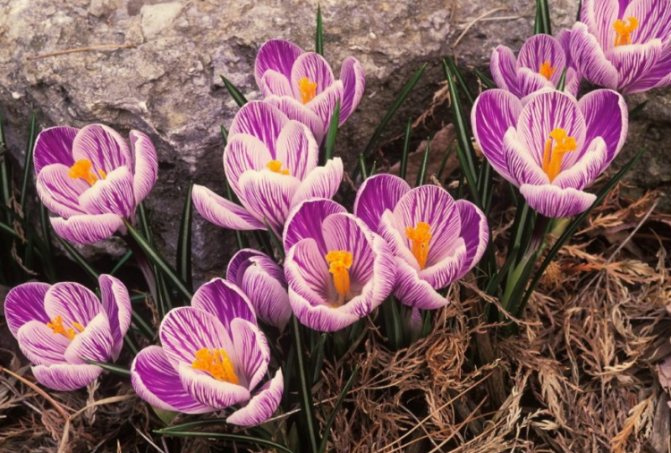

Blooming crocuses
Varieties
Popular representatives of culture
| Variety | Description |
| Spring blooming | |
| Light yellow | Produces up to 7 golden flowers at 8 cm high and 7.5 cm in diameter |
| Spring | Mostly single buds, but in some varieties you can see 2-3 pieces. on the stem. They are represented by a variety of colors: purple, lilac, white and even striped. Various sizes are also available - from 3 to 9 cm in diameter |
| Narrow-leaved | On the bush, you can see up to 5 pieces. golden flowers with reddish veins. In some varieties, the perianth is tinted outside with strokes. |
| Autumn blooming | |
| Sowing | Produces 3 purple-purple buds 8 cm high and 7 cm in diameter |
| Beautiful | Outwardly similar to the seed variety, but have lighter shades, about 5 flowers are formed on the stem |
| Pretty | One onion is capable of producing up to 10 flowers at a time, painted in light purple tones. They stand out for their pleasant aroma and large buds - 10 cm in height and 8 cm in circumference |
In addition to traditional varieties, on the flower beds of summer residents, you can see imported hybrids of the Dutch selection. They are also extraordinarily beautiful, but very picky about their care.
Note! Saffron can propagate both by seeds and by corms. The second option is preferable, since flowers from saffron seeds can only be expected for 3 or 4 years of life.
If you plan to use tubers, then it is better to dig them up in June-July (regardless of the time when crocuses are planted) and store them in a dark, well-ventilated place before planting in open ground.
Each plant forms nests in which “babies” appear after flowering. If the crocus is not touched for several years, then it will develop into a powerful bush, giving a large number of young planting bulbs.
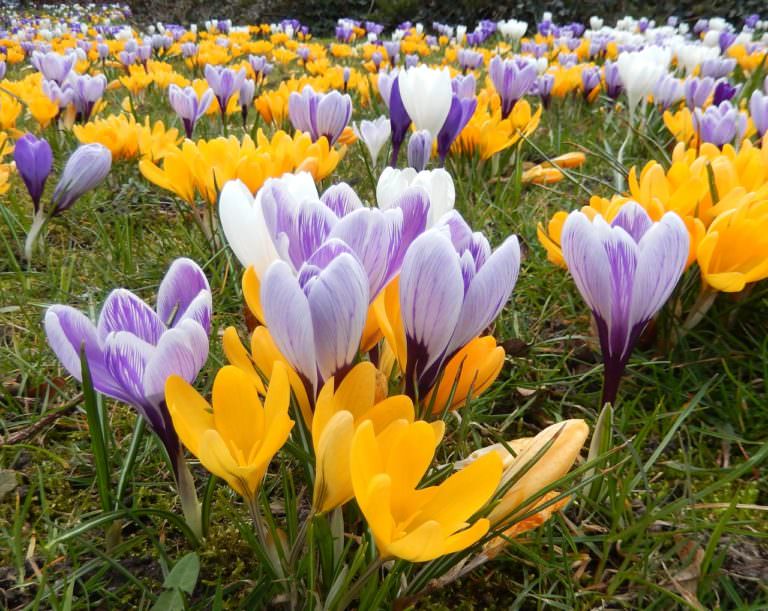

If the crocus is not touched for several years, then it will develop into a powerful bush.
If you do not collect the seeds that form on the stem, they are blown away by the wind and then germinate, forming a whole clearing.

